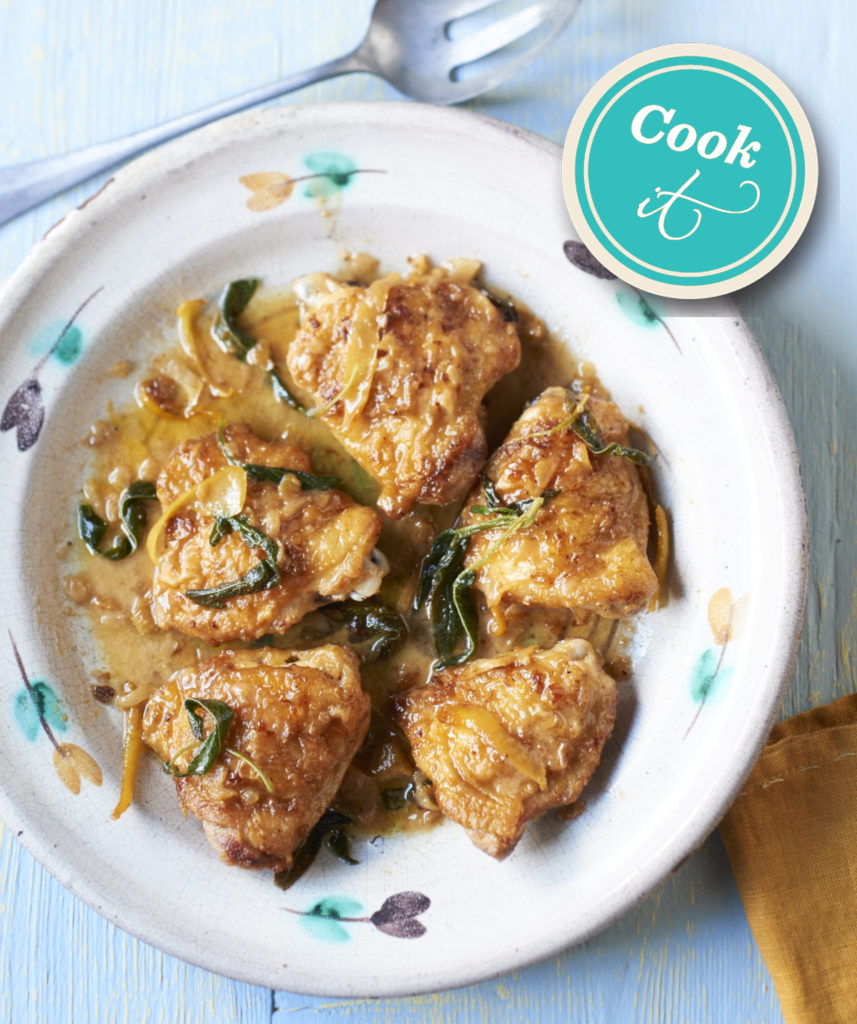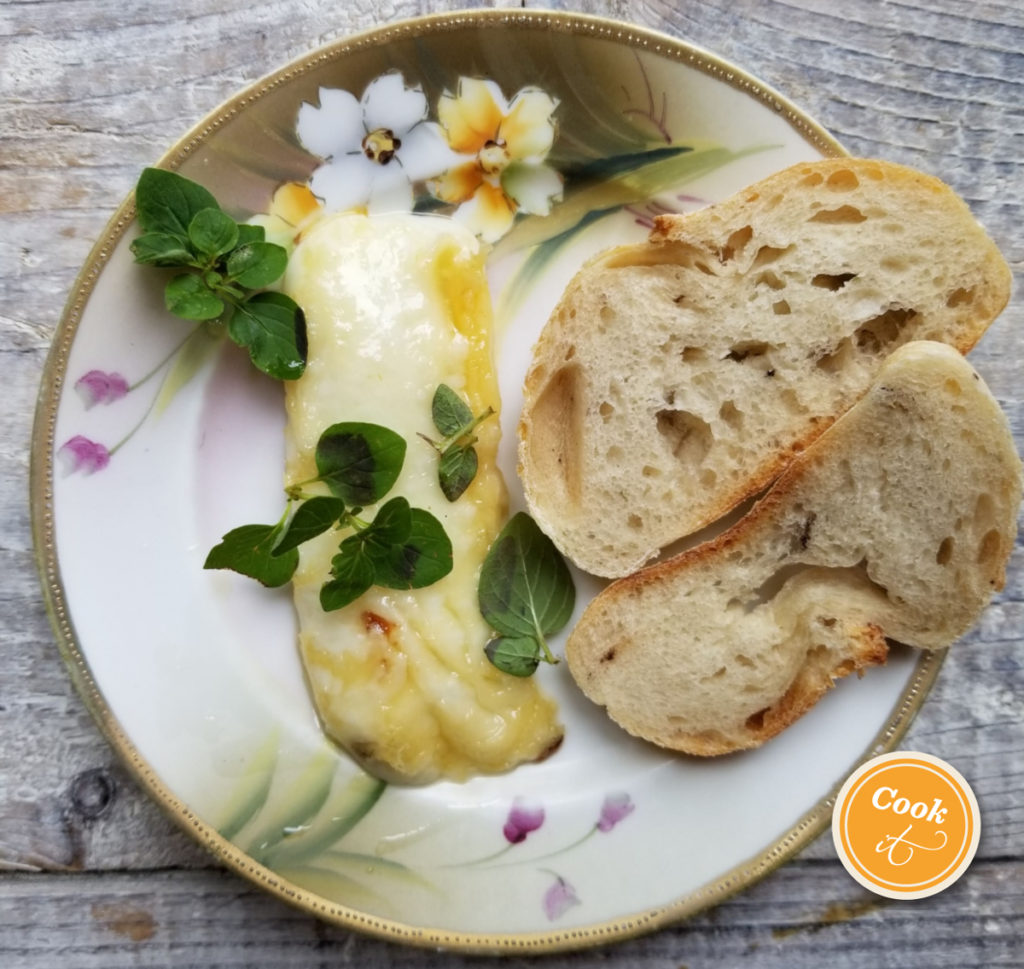The vibrant cover, showing lemons and sprigs of fresh oregano, with its little purple flowers, strewn across a background of blue Mediterranean tiles, grabbed my attention when I first laid eyes on this book. Then the mouthwatering food shots (by photographer David Munns) within. Cucina Siciliana was full of food I wanted to eat!
Ursula Ferrigno is an acclaimed food writer and cooking school teacher in the UK. She is the author of numerous cookbooks — this one being a re-issue of Flavours of Sicily, which was published in 2016. At first glance the books seem much the same – Munns’ lovely food shots are still there, the Introduction and text chapters are the same, but flip to the recipe index and it becomes apparent that quite a lot of tweaking has been done to this second edition.
The letter Q has gone altogether (along with the entries for quails and quinces). Gone too are zhug, baklava, tagines, and boiled eggs with dukkah. Jams and conserves have vanished. Not one of the four recipes I chose to test from Cucina Siciliana were included in that earlier volume. Some explanatory notes to accompany the second edition would have been useful.
But on to the cooking. Some recipes look like weekend projects – Cassata, for example, which calls for making your own sponge cake and lady fingers from scratch, in addition to an elaborate ricotta, nut, chocolate and dried fruit filling, and an all-day Pappadelle with Duck Ragu – but for the most part, the recipes are suitable for weeknight cooking.

First up Pollo al limone (Braised Lemon Chicken), which came together quite quickly for supper. Bone-in, skin-on chicken thighs are dusted with flour and fried until the skin crisps, then braised in wine white with onions, lots of lemon zest, and two sprigs of sage. Once the browning step is done, the dish looks after itself, simmering away on the stove top for about an hour.
While that was going on, I made Insalata di cavolfiori (Pickled Cauliflower Salad) which relied on pantry staples (green olives, capers, roasted red pepper, sun dried tomatoes) plus a handful of parsley from the garden. The cauli is blanched briefly, otherwise no cooking required. And since I had some leftover boiled potatoes in the fridge, I also made Insalata di patata di pantellaria (Pantelleria Potato Salad), which combines the spuds with chopped tomatoes, capers and black olives. Both salads are dressed in olive oil and red wine vinegar.
Two hours after donning my apron, dinner was on the table. The chicken needed a squirt of fresh lemon to punch up the flavour and the once-crisp skin was now flabby and pushed to the side of the plate, but the meat was moist and tender and the braising liquid reduced to a lovely sauce.
The two salads were delicious, with bold flavours and pleasing textures. Served side by side they competed for attention but both are easy and excellent recipes and either one would make a tasty meal simply paired with a piece of grilled meat, chicken or fish.

Interspersed among the recipe chapters are short feature articles about different aspects of Sicilian gastronomy — citrus fruit, bread, fish, aperitivo (cocktail hour), gelateria – that make interesting reading and include some fascinating tidbits of information about this Mediterranean island (such as the reason for the Mafia’s interest in owning citrus groves, and the origin of the Americano cocktail).
An essay about Sicilian wine inspired me to pay a visit to my local bottle shop to see what, if anything, I could find from this region. I came back with a bottle of Tasca d’Almerita Regaleali Bianco Sicilia, a blend of three Sicilian grapes (and some chardonnay). It was one of two Sicilian whites on the shelf, and at around the $15 mark, I thought, worthy of a risk.
Provolone con olio do’livia (Pan-fried Provolone with Olive Oil) from the Antipasti chapter, seemed like just the thing to serve with the wine. The cheese (bought as a block, not the ubiquitous slices) is cut into batons and briefly fried in olive oil that has previously sizzled a sliced clove of garlic. When the cheese is getting oozy, it is sprinkled with white wine vinegar and a few leaves of oregano, and served with crusty bread.
Oh my! Chewy bread, warm cheese, fruity olive oil and a marvelous glass of vino. The wine was a lovely match — beautifully dry and crisp, with an herbal note that picked out the oregano, and just enough acidity to balance the richness of the cheese. The dish took all of five minutes to make and was utterly delectable — a simple and spectacular showstopper that transported me to the sunny shores of Sicily. If there is one recipe that justifies the cost of buying a cookbook, this is mine for Cucina Siciliana.



